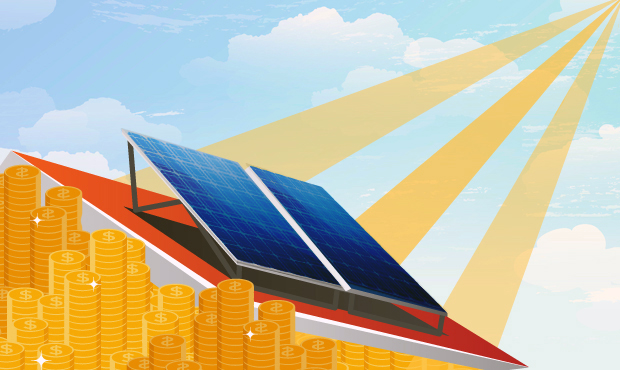
If you’re a savvy shopper, you may have been doing some research on whether or not it makes sense for your family to go solar. While federal tax credits and state incentives are making the initial cost of a solar system more affordable, you might be wondering what else you can do to lower your monthly utility bills. In your research, you might have skimmed past the term “SREC,” unsure of what it means. This blog explains what SRECs are and why they’re the best kept secret when it comes to solar energy savings.
What are SRECs?
SRECs, or Solar Renewable Energy Credits, are certificates that your solar system earns when it produces 1,000 kWh of renewable energy. There are other renewable energy credits that can be earned, but this one is specifically for solar. The amount of SRECs you can earn depends on the size of your solar system. The average residential system is 5 kW, so your family can earn almost 6 SRECs per year.
How much are they worth?
SRECs are worth money because you can sell them to utility companies which have a state mandated amount of renewable energy that they must produce each year. The value of SRECs depends on a variety of factors including the state in which you live and when the credits were produced. Location is important because different states have different fines for utility companies that did not produce their quota of electricity from renewable resources. These fines are called Alternative Compliance Payments and are charged for every kWh the utility company is short of its annual obligation. To prevent paying these fines, power companies buy homeowners’ SRECs.
Just like any other commodity, the amount companies are willing to pay for SRECs depends on supply and demand. Luckily for homeowners, there is a price floor and ceiling. The price ceiling is never more than the fine that the company would have to pay to the state, but it could come really close. According to massgov.com, in 2016 the ACP rate per kWh is $350. So while utility companies in Massachusetts are unlikely to pay homeowners $350 per kW for their SRECs, the price ceiling may come close to that.
Although homeowners don’t need to sell their SRECs right away, they should be warned that their value decreases over time. For example, a SREC from September 2014 is worth less than a SREC from January 2016 because the power company already met its quota for 2014.
Selling SRECs
There are two different options when it comes to selling your SRECs. The easiest method is to work with a middleman. This middleman collects SRECs from a lot of homeowners and sells them as a package to a power company. The solar company that installed your solar panels most likely has a relationship with someone who can help you with this process. Another option is to trade them on an open market just like a stock. Massachusetts is currently one of the few states that allows its residents to trade SRECs.
Solar leasing secrets
The biggest decision a person makes when deciding to go solar is owning vs. leasing. If you’re looking to get the most from your investment, owning your solar panels is the way to go. People who own their panels receive all of the benefits such as rebates, tax credits, and SRECs. People who lease solar panels miss out on a lot of these savings. One of the most popular leasing options is a Power Purchase Agreement. You loan your rooftop to a solar company and you pay the solar company to use electricity at a discounted rate. The solar company gets to keep all of the rebates, tax credits, and SREC income. Why is this such a popular option? These companies offer “$0 down” solar panel systems which are more affordable for homeowners up front, but in reality their electricity savings is closer to 5% vs. 35% for homeowners who own their solar panels.
Curious about SRECs? Want to learn more about solar energy savings? Contact our team at Wattson Home Solutions to get a free solar consultation.








